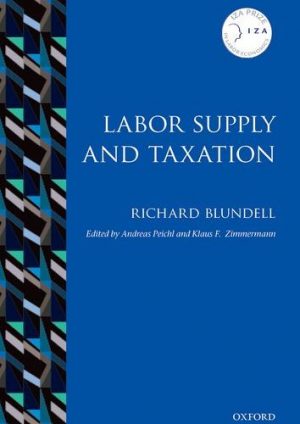Estimating labor supply responses using tax reforms
Chapter 6 of Labor Supply and Taxation, Richard Blundell. Andreas Piechl and Klaus F. Zimmerman (Eds).
This chapter investigates the responsiveness of labour supply to exogenous changes in wage rates and non-labour income. Because these can either cause a raised or reduced marginal tax rate, the tax reforms of the 1980s can be used as a basis to estimate a proposed model which is consistent with general life cycle behaviour. The chapter derives the conditions on grouping estimators required for the identification and estimation of wage and income elasticities, and relates this to the standard differences in different approaches and considers whether grouping according to tax status itself is likely to provide a reliable guide to labour supply responses. For these purposes the UK tax system has the advantage of simplicity, with most people being either basic rate taxpayers or non-taxpayers because their earnings are below an exogenously given threshold.




